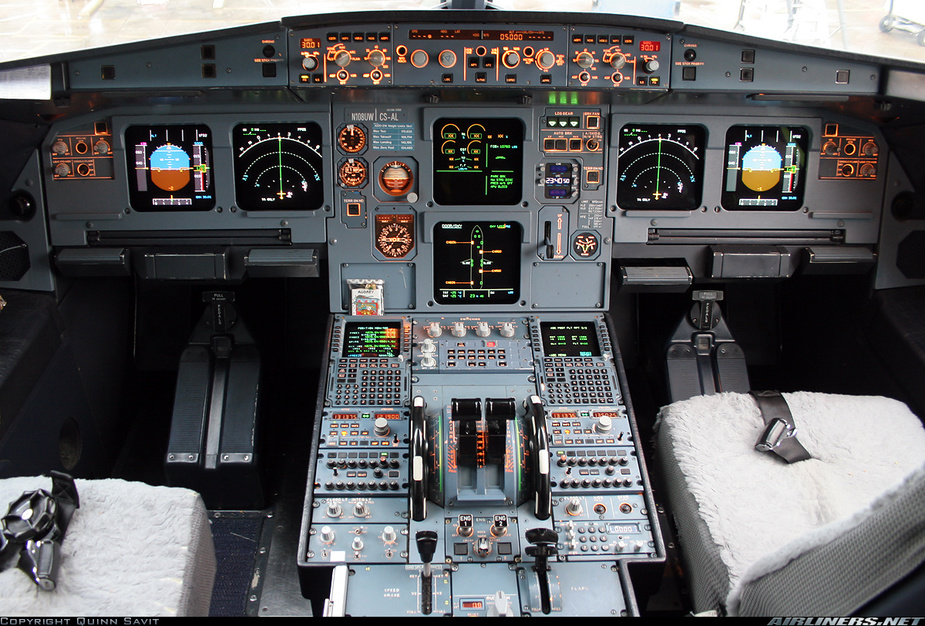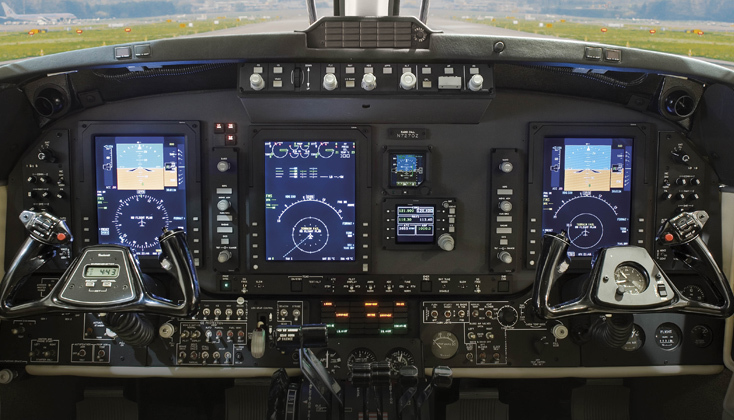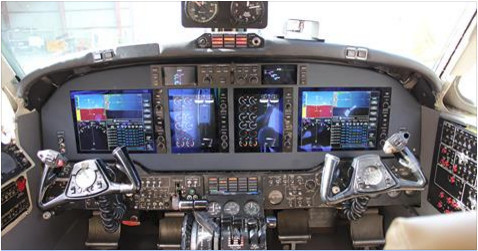That’s wishful-thinking-secure-your-delivery-position-by-deposit type of new?
If they pull this off, it would be amazing. However it seems like a stretch looking at their current small and outdated product portfolio. They have no experience in COM/NAV/GPS/transponder/AP.
This one is from Honeywell
Niner_Mike wrote:
This one is from Honeywell
A lot better, but still way overdone. This is what a professional cockpit looks like:

Look at the engine instruments. Two dials per engine. Not ten (twenty instruments for 2 simple PT6 engines? What were they smoking?) as in the flying videogame in Peter’s link. Who is going to monitor all those tiny little instruments? And how? Given the size of a King Air cockpit, each of these screens can hardly be bigger than an iPad mini. Reading those little dials will require binoculars from the pilot’s seat…
And what’s the point of dividing the primary flight display into four tiiiiny subscreens? The airbus PFD above is a lot bigger and only displays an ADI because this is all an average pilot can concetrate on when hand-flying in difficult conditions.
Sorry, but an ergonomic and efficient workspace does not have to look like that.
The engine gauges in the original post are designed to mirror the presentation on the thousands of conventionally instrumented King Airs out there. Until there is a FADEC PT6 you need them all.
I rather like this:

Although the engine instruments on the MFD take some getting used to.
Neil wrote:
The engine gauges in the original post are designed to mirror the presentation on the thousands of conventionally instrumented King Airs out there.
But the normal King Air has 5 or 6 gauges per engine, not 10. And even of those six, two or three could be dropped. I am all with airbus concerning the “dark cockpit” philosopy. Why distract the pilot with stuff he can’t do anything about? Internal engine parameters like N2, oil temperature, oil pressure and such. As long as they are in the green there is no need to display anything.
Neil wrote:
Although the engine instruments on the MFD take some getting used to.
They look a bit strange at first glance. But I guess that if any parameter gets towards a critical range, the display will change to something that can be easily understood.
what_next wrote:
But the normal King Air has 5 or 6 gauges per engine, not 10. A
The displays in Peter’s picture actually have 5 gauges per engine. The two middle displays show the same information. Of course, you could really ask why that would be a good idea.
Looks nice in real life

A lot better, but still way overdone. This is what a professional cockpit looks like:
Yeah but the EIS system of the A-busses have the integration of the ECAM system with the Flight Warning Computers and all the relevant logic behind. Hardly comparable with the Honeywell system 
It’s going to be hard work for them to capture much market share. The Garmin G1000 has dominated the KingAir retrofit market (Elliott Aviation have done over 200 themselves!) and with the new Rockwell Collins Fusion replacing Proline 21 on new aircraft and the Honeywell Aerovue retrofit system also about to be certified, are there really enough interested customers to justify the R&D?